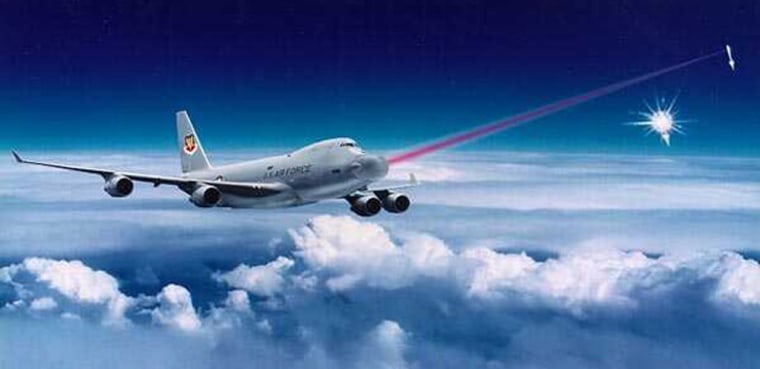A Boeing Co.-led team has successfully fired for the first time a powerful laser meant to fly aboard a modified 747 as part of a U.S. ballistic missile defense shield, officials said Friday.
The test, dubbed “First Light” by insiders, lasted only a fraction of a second but gave the project an important boost at a time it was deemed at risk of cuts or cancellation.
The Pentagon’s Missile Defense Agency described the event — carried out on Wednesday in a 747 fuselage on the ground at Edwards Air Force Base in California — as a “landmark achievement” for the Airborne Laser system.
“It showed they work,” Kenneth Englade, an agency spokesman, said of the laser’s six identical, pickup-truck-sized, modules linked to fire as a single unit. “The rest is fine-tuning.”
The Chemical Oxygen Iodine laser is built by Northrop Grumman Corp. It includes breakthrough optics designed to focus a basketball-sized spot of heat on a missile’s skin to rupture it up to hundreds of miles away.
Monitoring potential foes
Pentagon officials envision several such aircraft flying by turns near North Korea or another potential foe’s territory. The goal is to detect, track and destroy a missile when that would be easiest, before it releases a warhead that could be tipped with chemical, nuclear or germ weapons.
Demonstrated progress, particularly in achieving “First Light,” would be critical to continuation of the project, negotiators from the House and Senate armed services committees said in a report last month accompanying the 2005 Defense Authorization Act.
Congress authorized President Bush’s request for $474.3 million for the program in fiscal 2005, which began Oct. 1, as part of the $10 billion budgeted for missile defense development and deployment.
Still a long way to go
Philip Coyle, the Pentagon’s chief weapons tester under former President Clinton and a critic of early missile defense deployment plans, described the test on Wednesday as very important to people working on the program.
“They deserve a lot of credit for having gotten this far,” he said in a telephone interview. “But they’ve still got a long way to go” to demonstrate shoot-down capability.
Among other technical challenges, Coyle said, engineers must figure out ways to fire the laser for the longer time needed to zap a missile without damaging the optics through which the beam passes — a kind of technical Catch-22.
More power
In coming months, Englade said, engineers hope to boost the duration and power of the laser’s beam. It will then be installed on a 747-400F aircraft for a test that includes shooting down a dummy ballistic missile over the Pacific. No date has been set for that test.
A multibillion-dollar ground-based system for detecting and destroying missiles fired from a country like North Korea is due to be declared ready for operation by the end of next month.
The ground-based system, also integrated by Boeing, is meant to be the first leg in a system that could ultimately include the airborne laser as well as interceptor rockets that could become the first weapons based in space.
